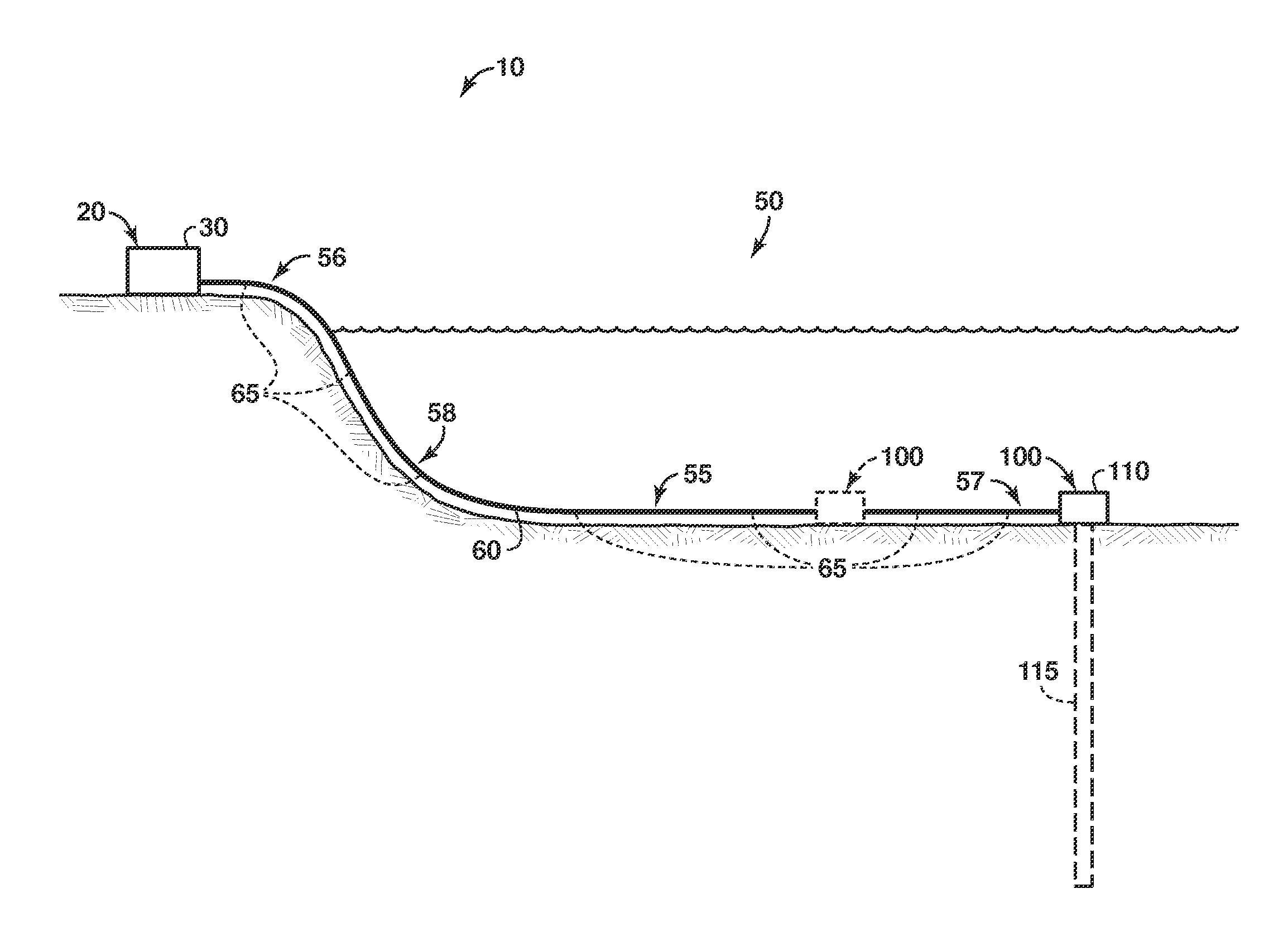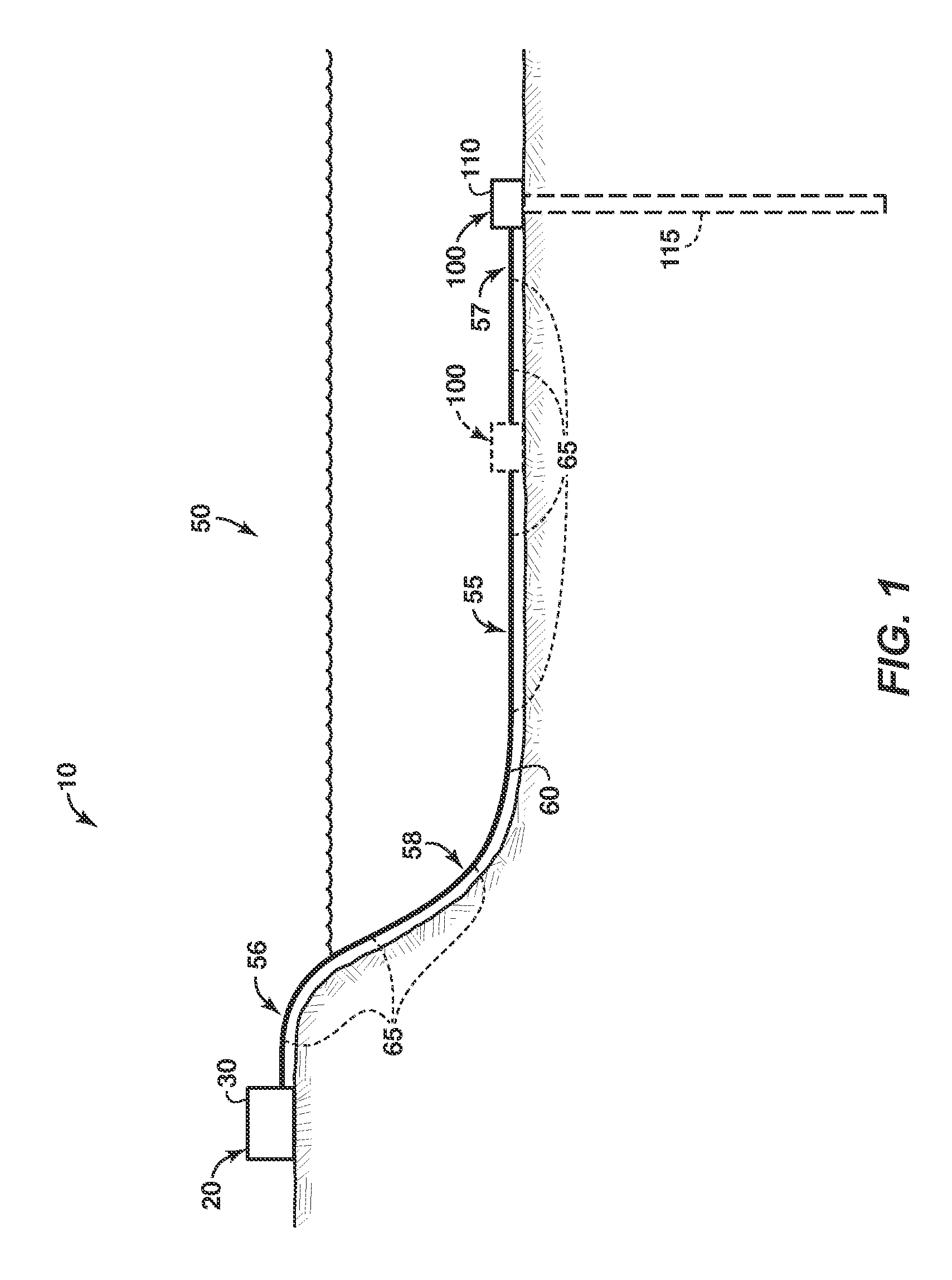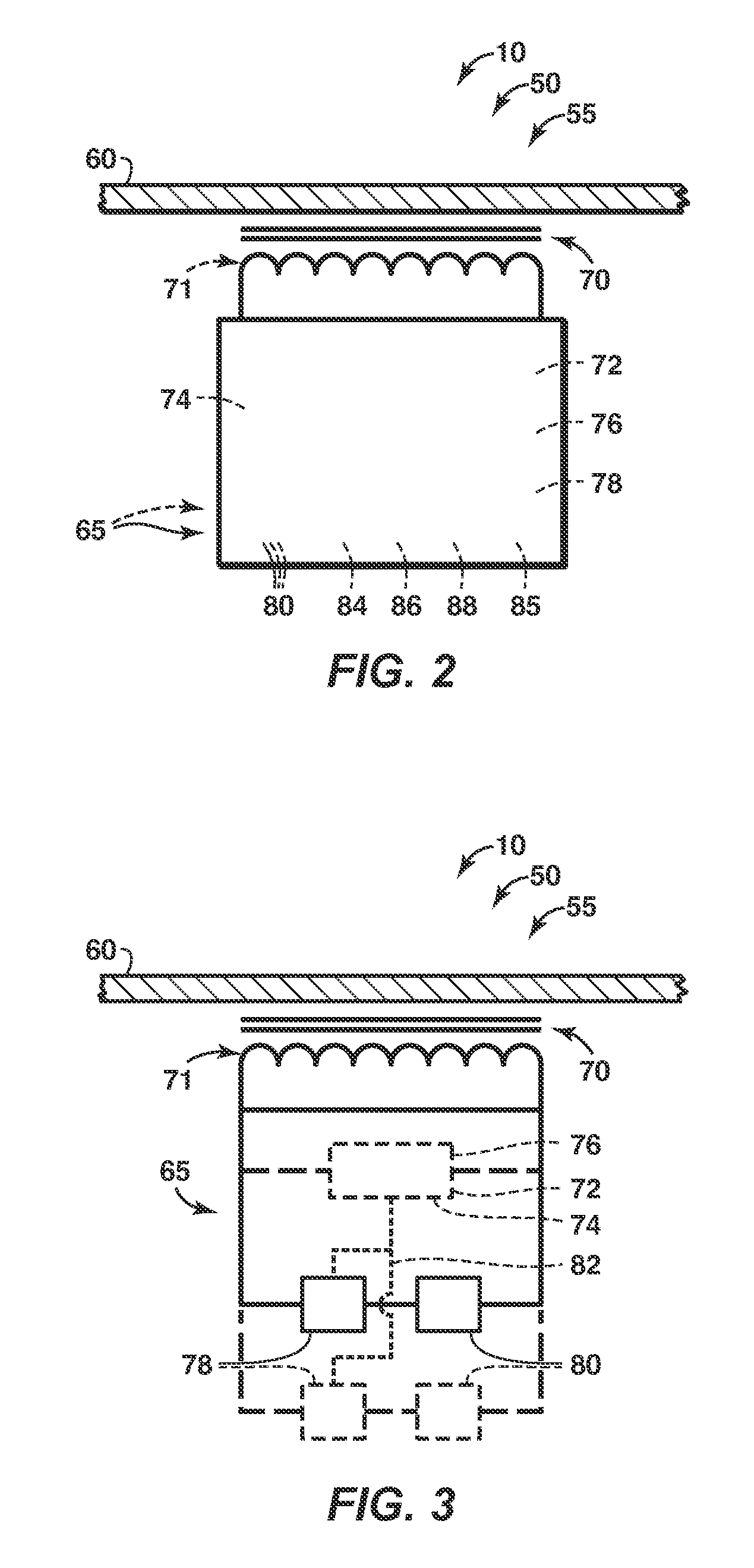Systems and Methods For Distributed Impedance Compensation In Subsea Power Distribution
a technology of distribution system and distribution system, which is applied in the direction of insulated conductors, power cables, cables, etc., can solve the problems of increasing the overall size and cost reducing the overall efficiency of the power distribution system, and controlling the production and supply of electrical energy to these electric motors over long distances
- Summary
- Abstract
- Description
- Claims
- Application Information
AI Technical Summary
Benefits of technology
Problems solved by technology
Method used
Image
Examples
Embodiment Construction
[0019]FIG. 1 provides a schematic representation of an illustrative, non-exclusive example of a power generating and distributing assembly 10 according to the present disclosure. Power generating and distributing assembly 10 includes any suitable electricity source 20, such as power generation system 30, as well as subsea power distribution system 50. Subsea power distribution system 50 provides electrical energy from electricity source 20 to one or more subsea energy consuming devices 100, such as subsea hydrocarbon recovery equipment 110.
[0020]Electricity source 20 may include any suitable source of electrical energy, or electrical potential, including sources of high voltage alternating current (HVAC). Illustrative, non-exclusive examples of sources of electrical energy according to the present disclosure include any suitable type and number of electrical utility grid, energy storage device, battery, capacitor, inductor, and / or power generation system 30. Power generation system ...
PUM
| Property | Measurement | Unit |
|---|---|---|
| length | aaaaa | aaaaa |
| length | aaaaa | aaaaa |
| length | aaaaa | aaaaa |
Abstract
Description
Claims
Application Information
 Login to View More
Login to View More - R&D
- Intellectual Property
- Life Sciences
- Materials
- Tech Scout
- Unparalleled Data Quality
- Higher Quality Content
- 60% Fewer Hallucinations
Browse by: Latest US Patents, China's latest patents, Technical Efficacy Thesaurus, Application Domain, Technology Topic, Popular Technical Reports.
© 2025 PatSnap. All rights reserved.Legal|Privacy policy|Modern Slavery Act Transparency Statement|Sitemap|About US| Contact US: help@patsnap.com



